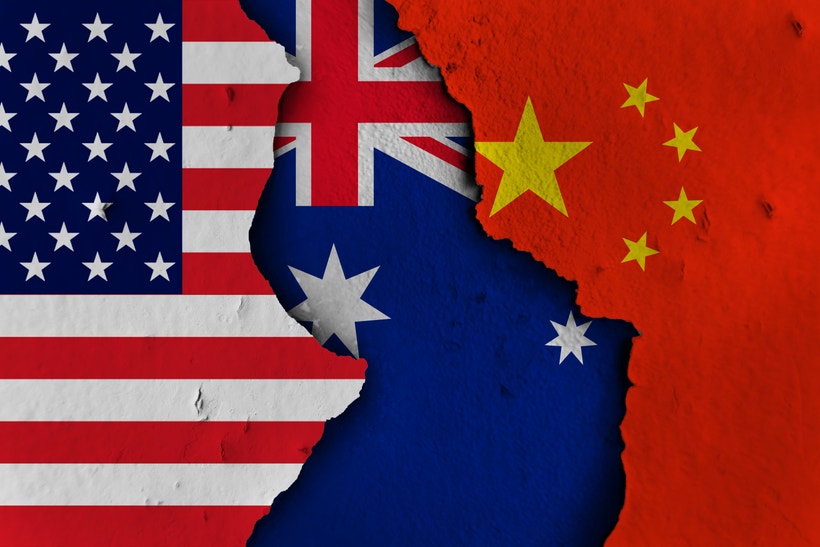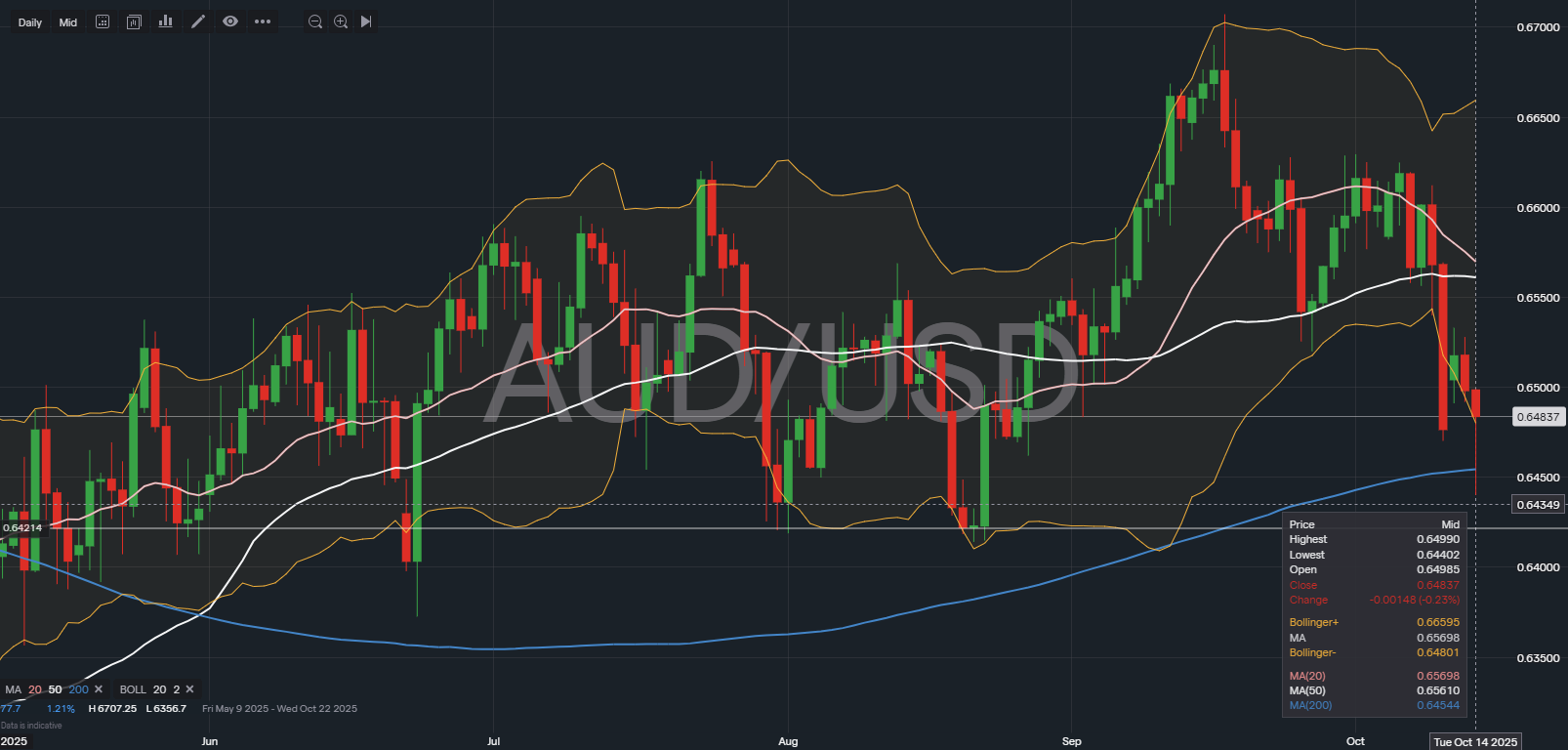Australian Dollar Tumbles on China Port Fee Escalation, Tests Key Support
AUD/USD sinks 1% overnight as China imposes shipping port fees, testing 200-day moving average at 0.6450 before recovering on improved US sentiment.

The Australian dollar plunged against all major currencies overnight following China's decision to impose port fees on shipping vessels, marking a significant escalation in ongoing trade tensions between the world's two largest economies. The move compounds pressure on the aussie after Friday's sharp 1.4% decline in AUD/USD triggered by Trump's initial tariff threats against China. While weekend assurances of cooperation had sparked a brief recovery to start the week, China's retaliatory port fee announcement sent the pair tumbling another 1% as the U.S. dollar captured safe-haven flows throughout the European trading session. The selling momentum reversed during the U.S. morning open, with improving risk sentiment and a rebound in equity markets providing relief for the battered commodity currency.
AUD/USD Price History

Technical indicators suggest AUD/USD may be approaching oversold territory after testing critical support levels. The pair touched 0.6450 at its weakest point around 6am EST, marking the first test of the 200-day moving average since May - a level that has historically provided significant support. Following the intraday reversal, AUD/USD now trades at the lower Bollinger Band (2 standard deviations on the 20-day), sitting precariously just above Friday's lows. Australian employment data due Wednesday night could provide near-term direction, while Federal Reserve speakers scheduled throughout the week may influence US dollar strength. However, the primary catalyst for major moves remains the unpredictable flow of trade-related headlines, with any commentary from Trump or Chinese officials capable of triggering sharp volatility in the Aussie.
Trading forex requires an account with a forex provider like tastyfx. It’s important to manage your risks carefully as losses can exceed your deposit. Ensure you understand the risks and benefits associated with trading leveraged products before you start trading with them.
